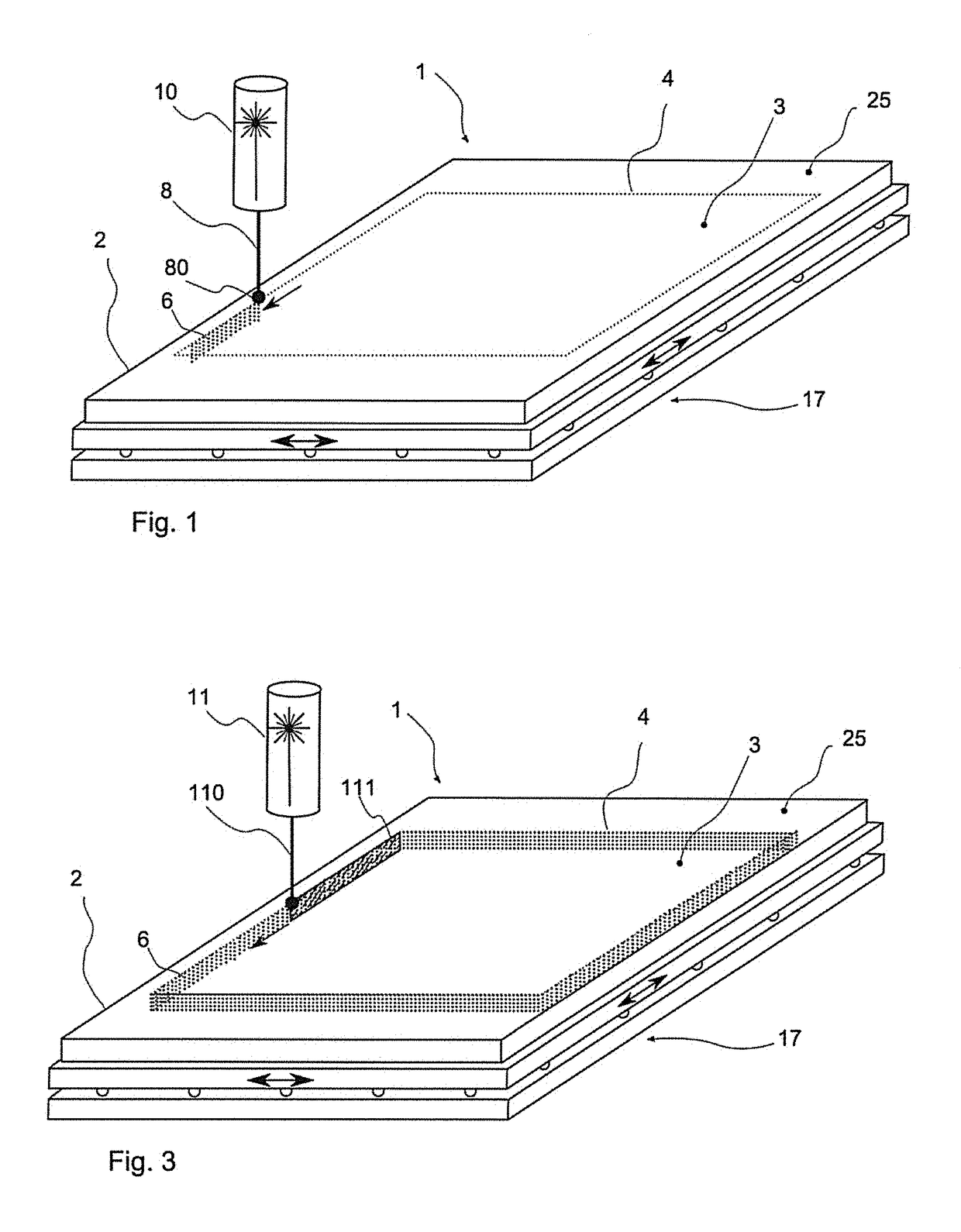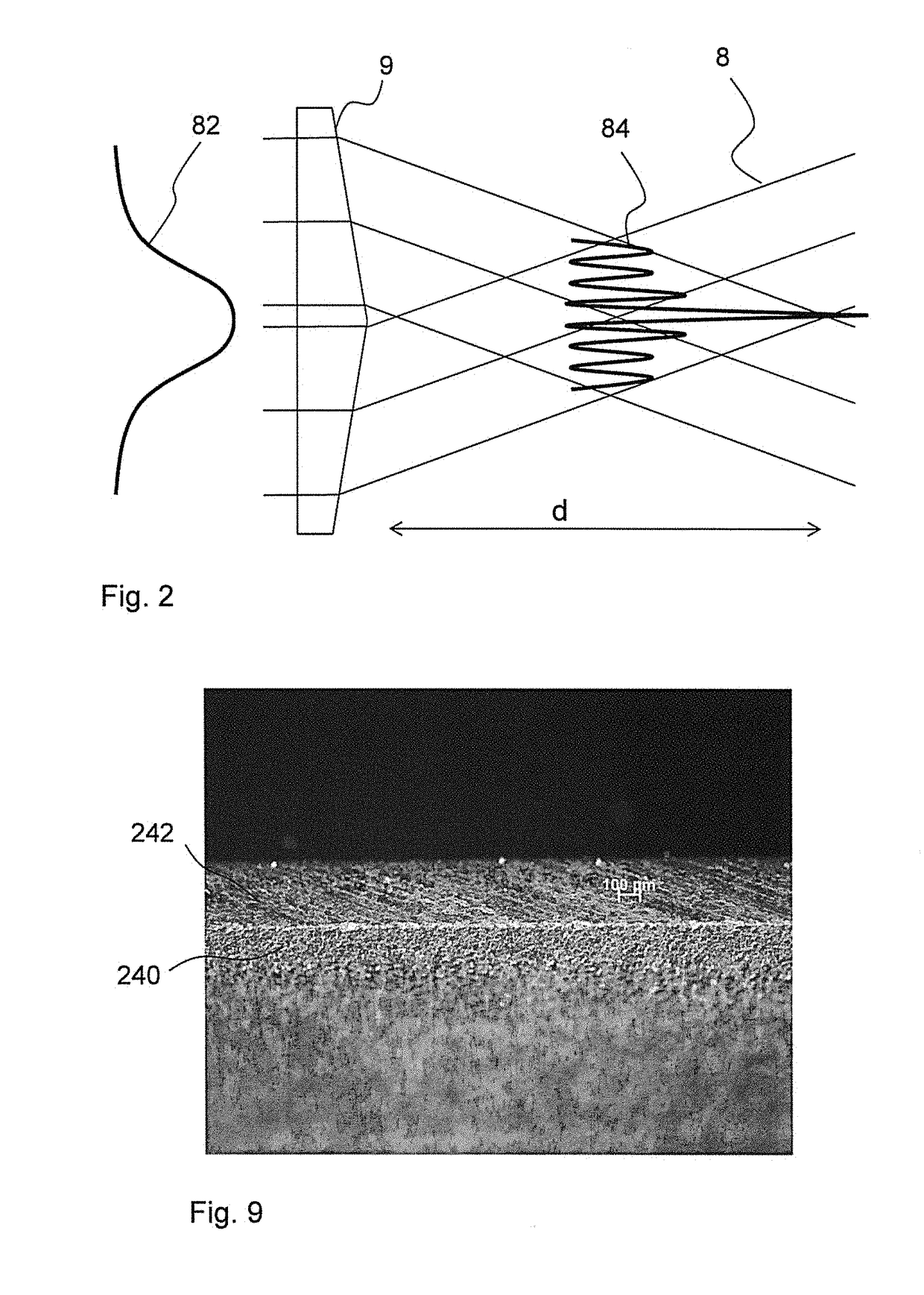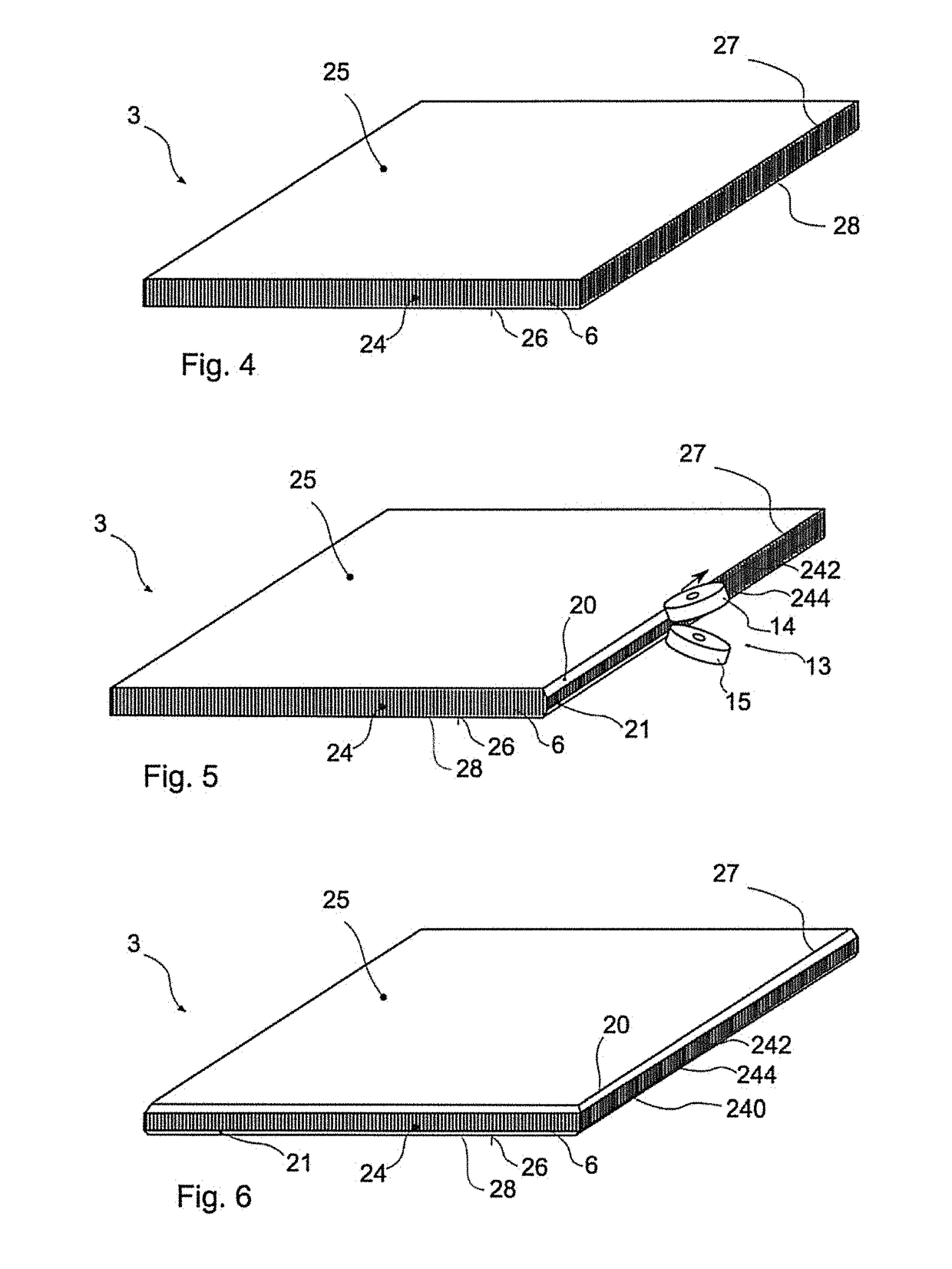Method for machining the edges of glass elements and glass element machined according to the method
- Summary
- Abstract
- Description
- Claims
- Application Information
AI Technical Summary
Benefits of technology
Problems solved by technology
Method used
Image
Examples
Embodiment Construction
[0032]For the method according to the invention, a glass or glass ceramic element 3 with fixed dimensions is worked out of a flat glass or glass ceramic part 2. FIG. 1 shows an exemplary embodiment of a laser processing device 1 for carrying out this step of the method. A pre-separation is carried out through insertion of elongated or filamentary damages along a provided separating line 4. The imaginary separating line 4 and accordingly also the course of the inserted damages 6 trace the outer contour of the glass or glass ceramic element 3 that is to be released.
[0033]Accordingly, for the example shown in FIG. 1, a rectangular element is to be cut out of the glass part or glass ceramic part 2 corresponding to the course of the imaginary separating line. The separating line 4 need not necessarily run along the entire outer contour. For example, it would also be conceivable that the outer contour of the glass or glass ceramic part 2 and of the glass or glass ceramic element 3 that is...
PUM
| Property | Measurement | Unit |
|---|---|---|
| Thickness | aaaaa | aaaaa |
| Distance | aaaaa | aaaaa |
| Feed rate | aaaaa | aaaaa |
Abstract
Description
Claims
Application Information
 Login to View More
Login to View More - R&D Engineer
- R&D Manager
- IP Professional
- Industry Leading Data Capabilities
- Powerful AI technology
- Patent DNA Extraction
Browse by: Latest US Patents, China's latest patents, Technical Efficacy Thesaurus, Application Domain, Technology Topic, Popular Technical Reports.
© 2024 PatSnap. All rights reserved.Legal|Privacy policy|Modern Slavery Act Transparency Statement|Sitemap|About US| Contact US: help@patsnap.com










